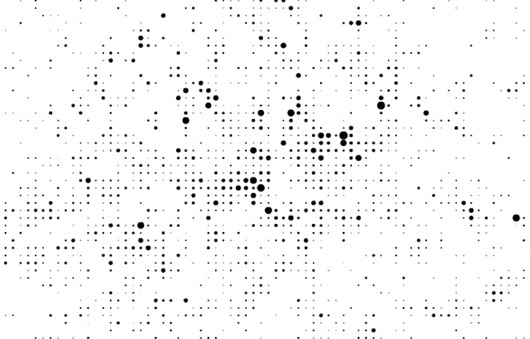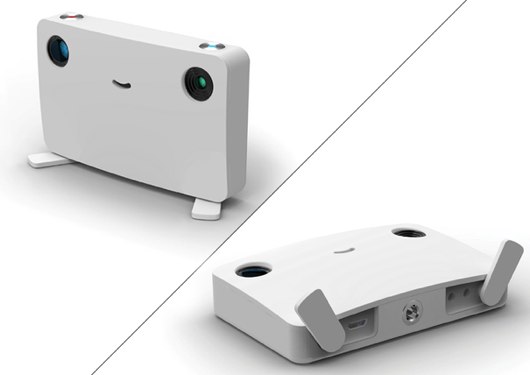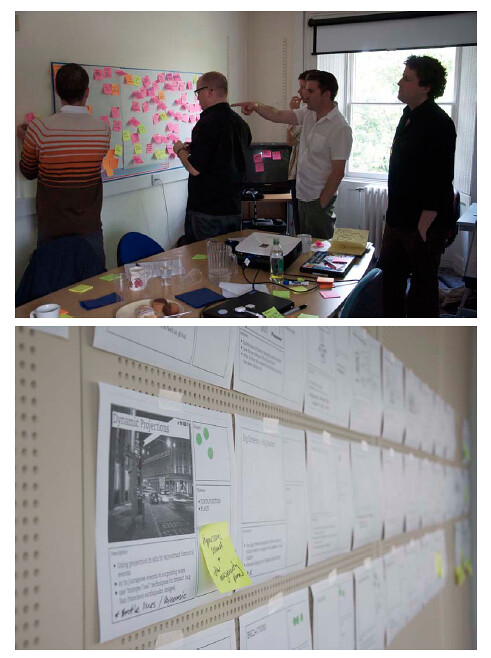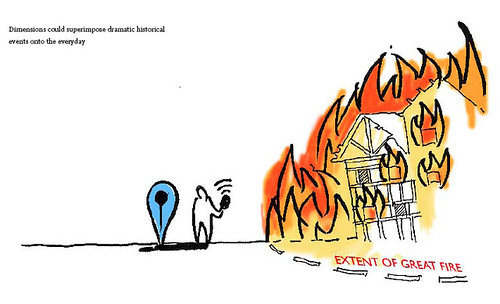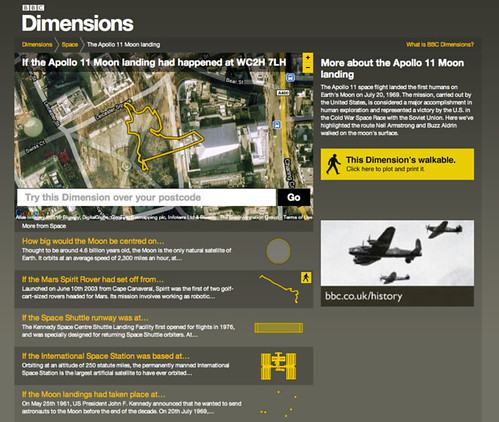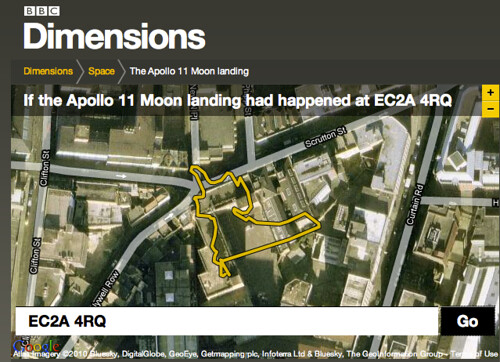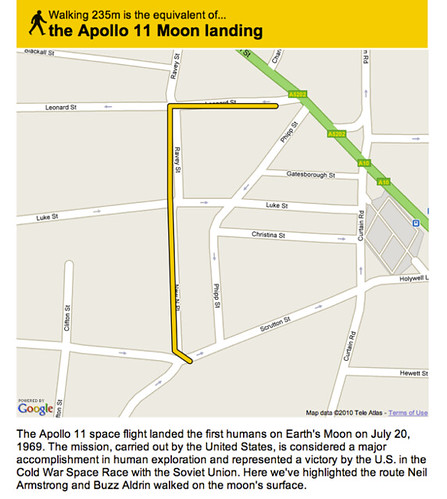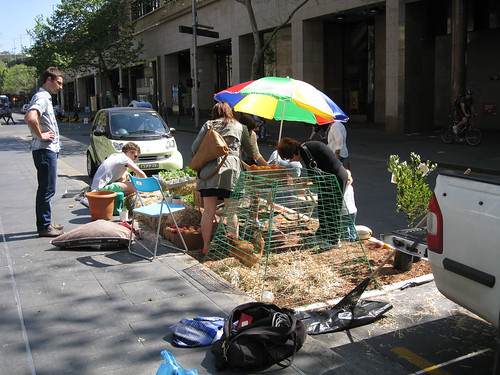Matt B. will be giving a talk about his work at BERG and beyond (and maybe even taking some sock puppets) at HD-Live in Hull, alongside Ben Hammersley and Brendan Dawes amongst others. Here’s the event on Lanyrd.
Matt Jones speaking at Barcelona Design Week, October 21st, Barcelona
I’ll be at the Mobile Design Congress event as part of Barcelona Design Week.
The theme is “Designing for the Networked City” and I’m excited that I’ll be there with two of my favourite geniuses Usman Haque (again!) and Kevin Slavin. Really looking forward to this – thanks to Rudy De Waele for the invite.
Matt Jones speaking at PSFK Conference, September 10th, London
Time to list a few upcoming talks various members of the studio will be giving… Firstly, I’ll be giving a short talk alongside Usman Haque, Dan Hon and others on September 10th, at the PSFK London Conference.
I’m not entirely sure what I’m going to say yet, but I think it will include some nice videos, some dodgy microbiological metaphors and some thinking about product…
This also gives me a chance to plug Natalie Downe and Simon Willison‘s new service, a social-network for compulsive conference goers called lanyrd.com
Alumni Watch: Spot Goes To School

One of the pleasures of being at BERG is the people you get to work with. The core group in the studio is small, so we often work with collaborators on larger projects. They bring something fresh to the mix in the studio, making their own mark both on the work we do and the culture of the space.
Earlier this year, Lei Bramley worked with us – primarily, with Nick – on developing the iPad reader application for Mag+. It was great to have him around.
It’s always nice to know what BERG alumni are up to. Lei’s just finished helping Penguin with their iPad version of Spot Goes To School, which looks like an interesting take on what a rich, interactive children’s book can be. You can find out more on the iTunes Store.
Lei told us that “it was a lot of fun, although I have the recurring whistling theme music branded onto my brain!” It’s a really nice product.
Week 272
Studio leylines
One of the things that was easier, writing these notes about the studio back in 2009, was that the room was smaller. There’s something about stewing in each other’s pheromones. You share moods. If the week was tiring, you were all tired. If you had the sherbet fizz of excitement in your belly, you knew that was the collective unconscious of the studio at large.
In August 2010, we’re too big for that. We’re not big by any means! Eight people, a network of experts, and just taken on a ninth – Alex Jarvis is joining us in October! – but big enough for different moods and senses to sit together in the same space.
When three people are buzzing, collectively discovering a new filming technique, you can see the static sparks fly between them and the energy is infectious. Conversely, a feeling of difficulty or defeat when a particular project is crunching can rise like some deep magma upswell and roll around the studio almost tidally before it’s recognised, digested and massaged out.
Mood transmission follows lines of physical proximity, conversations, and collaboration.
Part of the job of gardening a studio – a community of people – is to encourage the right transmissions and tides. By weaving together sources of energy, in reinforcing loops, a collective exuberance may take place.
Exuberance is a period in the development of the brain that lasts until 10 years of age. It is an over-production of connections between neurons, a decade-long acid trip seeing the secret alignments of the universe. During your teenage years, your brain sculpts itself into a mirror of the reality it has chosen to perceive, pruning away possible worlds.
Exuberance is a state only entered into with care. It’s frazzling. We maybe don’t have to use it right now.
We have a lot on at the moment: internal R&D, film-making, design and communications work, ops and infrastructure, the sales pipeline… projects are giant invisible bears that roam around the studio tickling ribs and cracking heads. Recently projects have been colliding, not in a way where that has been affecting the work, but in odd second-order ways: people have to task-switch too much; tasks appear suddenly when they’re urgent instead of being apprehended; the gardening of the studio becomes automatic and unthinking. That needs to be looked at.
When I write these notes, I’m aware that I’m now just one perspective. When I look around, easiness and effort sit side-by-side. This studio has many voices.
What matters now are how different characters refract light differently as illumination moves between them, and how the interference patterns of the waves and rhythms of different projects interacting can be either choppy or smooth. Complexity. I have no ways to understand this. My brain’s picture of reality isn’t yet sculpted like this.
So I’m thinking about ways to manage a small big room instead of a big small room.
All of which feels like growing up a bit.
Autopoiesis is a process whereby a system produces its own organization and maintains and constitutes itself in a space. E.g., a biological cell, a living organism and to some extend a corporation and a society as a whole.
The studio we’re creating together is not only a garden that grows culture, but at the same time garden capable of self-gardening. We sometimes overlook this capacity in humans I think, because of the organ focus we have on the body. There is an organ for thinking. There is an organ for cleaning the blood. There is an organ for digesting the world into particles. These are clearly demarcated. There is also an organ for self-growth, but it isn’t demarcated in the same way. It is distributed into the molecules of every cell in the body. It exists on the organisational plane. So the organs of regulated self-creation in our studio will be psychic and structural, but they have existence none-the-less. I want to be able to spend more time looking for and looking after this organ.
For some reason today, I’m preoccupied with the leylines and gravities and internal terrain of the studio.
12 months
I monitor three budgets: attention; cash; risk. All are flows to be directed. Attention: how many minutes do we have as a studio, any how many can be spent in experimental or undirected ways? Cash: how can cash-flow be managed to build up working capital to invest, versus spend freely to buy more attention to spend? Risk: how tolerant are the attention and cash budgets to delay or failure?
We can direct some flow into the infrastructure of the studio machine: our calcified processes, libraries and knowledge that operate automatically, and give our future attention and cash greater leverage.
In the last 12 months, we’ve consulted on design strategy with Nokia, the BBC, Sitra, Bonnier, Layar, BILD and Absolut. We’ve written articles in Icon and Edge, had press in Wired and Creative Review. We’ve made a movie about RFID, re-invented the magazine with Mag+ — and created a digital magazine publishing platform that excited Apple. We’ve released Michel Thomas, Schooloscope, and BBC Dimensions. We’ve moved premises, built a team, and have significant internal and client projects well underway.
From this, we’re building decent leverage of our activity. The conversations we have with people now are less like client/supplier interactions, and more like figuring out how to start relationships. Good.
Behind the mountains there are mountains, so enjoy the climb. It’s a good feeling to look at the mountain-tops and, even in a little way, know we have room to choose the path.
BERG
And of course, on 19 August last year, we launched as BERG.
A beautiful, difficult, inventive, frazzling, exuberant, rewarding, wonderful garden.
One year!
Links round-up: Foursquare visualisation, cute projectorcams, AR videogames, task management
Matt J provided this image of Kodak’s first digital camera, from 1975, and the accompanying story:
It was a camera that didn’t use any film to capture still images – a camera that would capture images using a CCD imager and digitize the captured scene and store the digital info on a standard cassette. It took 23 seconds to record the digitized image to the cassette. The image was viewed by removing the cassette from the camera and placing it in a custom playback device. This playback device incorporated a cassette reader and a specially built frame store. This custom frame store received the data from the tape, interpolated the 100 captured lines to 400 lines, and generated a standard NTSC video signal, which was then sent to a television set.
Matt B sent us Anil Bawa-Cavia’s visualisations of Foursquare check-in data for London, Paris and New York. The striking maps (an excerpt of which is displayed above) start by displaying activity across a uniform grid:
In these maps, activity on the Foursquare network is aggregated onto a grid of ‘walkable’ cells (each one 400×400 meters in size) represented by dots. The size of each dot corresponds to the level of activity in that cell. By this process we can see social centers emerge in each city.
There’s more at the link above, and also in Anil’s explanation of the techniques used – where he also provides a dump of all the data.
Matt W found this lovely design for a digital camera with built-in pico projector. Of course the two lenses are eyes. And everything else stems from there.
Nick pointed out that Epic Win is now on sale. It’s a playful to-do list that turns doing tasks into experience points for an avatar, much as Chore Wars before it. What sets it out for me is just how much value there is in making a functional piece of software – in this case, a to-do list – well-designed and beautiful. It’s fun to use, without getting in the way of the basic task of making lists, and I want to go back to it. It’s worth playing with just for the consistency of its visual design.
Finally, I really liked David Arenou’s “Immersive Rail Shooter”. In it, he takes the standard video-game lightgun game and adds the ability to use the environment for cover, by placing AR tags around a room for the console’s camera to detect. From his site about the project, it appears to be a very much working prototype (as opposed to proof-of-concept video).
What’s really fun for me is that although it uses markers and computer vision to detect the player’s location, the “augmenting” of reality is done not through a camera and a screen – but by changing of the room the player interacts with. All of a sudden, the chair in the real-world becomes cover in the game-world, and so you end up ducking and diving around the living room. No glasses, no holding a mobile phone in front of your face, but the boundary between the game and reality has very definitely been blurred.
BBC Dimensions: The Pakistan Floods

Shortly after the launch this week of BBC Dimensions at http://howbigreally.com, it was given a good test of how the system can respond to current events as well as bringing the scale of historical events and places home.
Max Gadney, who commissioned the project at the BBC, and KeltieCochrane (who produced the inforgraphic assets that are superimposed on the maps) collaborated to quickly produce a ‘Dimension’ based on map graphics on the BBC News site, showing the extent of the current terrible flooding in Pakistan.
Initially it’s superimposed over the UK, centred on London. When I saw it stretched from the Bay of Biscay, across Britain – to almost the tip of Norway, it gave me real pause. I went and donated to the Disasters Emergency Committee.
You can donate to the emergency fund at http://www.dec.org.uk
Introducing BBC Dimensions
About a year ago we did some workshops with the BBC, to look at new ways in which history could be explored and explained using digital media. We came up with 30 or so ideas which got narrowed down to 5 ‘microbriefs’ for possible future prototyping.
One of our favourites from the off was an idea we called “Dimensions”.
From our original concept document:
“We want to bring home the human scale of events and places in history. The Apollo 11 Moon walk explored an area smaller than Trafalgar Square; the distance between your WW1 trench and the enemy could only be as much as from your front door to the street corner.
Dimensions is a feature on websites that juxtaposes the size of historical events with your home and neighbourhood. You’re hearing about the span of the base of the Great Pyramids, or the distance of the book depository from JFK, or the extent of the Great Fire of London… Dimensions overlays this map on a satellite view of where you live.”
Earlier this year we began to design and build a public prototype of the BBC Dimensions concept which we’re putting live today.
It lives at http://howbigreally.com and it’ll be available as a trial for the next few months.
Let me give you a little tour.
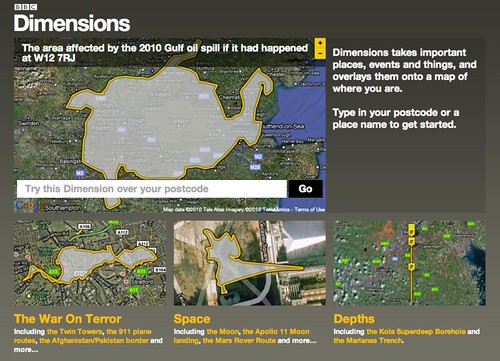
The home page is a collection of what we’ve been calling ‘packages’ – themed collections of ‘Dimensions’. For instance here: ‘The War On Terror, ‘Space’ and ‘Depths’
What’s a Dimension then? Well, basically what it says right there on the homepage: “Dimensions takes important places, events and things, and overlays them onto a map of where you are.”
You can have a play right there and then by entering your postcode or a place name. It understands most things that google maps understands. We’ve built the prototype using google maps, but there’s no reason why it couldn’t work on top of another mapping system eventually.
As we were building the prototype, the BP Deepwater Horizon oil-spill disaster occurred, and you might have seen the excellent visualisation at http://www.ifitwasmyhome.com/ by Andy Lintner.
When we saw that and how well it was received – we knew we were on the right track! Dimensions is a platform to explore a lot more in that vein.
Wandering into the ‘Space’ package reveals a few different types of dimension – sizes, plans, routes.

The routes, such as that taken by the Apollo 11 moonwalkers mentioned in the original concept really can be revealing when juxtaposed on your postcode, or an area you know well…
For instance if I type in our studio’s postcode…
I can see that Buzz and Neil would have barely left the building’s carpark…
Some Dimensions let you go a step further, literally – by allowing you to plot a route around your neighbourhood, or perhaps your commute, or perhaps a nearby bit of countryside – so that you can viscerally experience the distances involved.
You point and click on the map to make your walk like so – a little gauge runs along the bottom so you can see how far you have left to plot…
…and when you’re happy with your route you can print out a map to take on your dimensional ramble.
The distance just about takes us from the front-door of our studio to a refreshing pint in one of our locals, The Book Club. Just the thing after a moonwalk.
And that’s Dimensions!
One of the things I love about it is things like that – where something huge and momentous is made grokkable in the familiar. I also love that that’s all it really does.
It’s a bit like a digital toy – that just does one thing, very clearly (we hope) and delights in doing so.
It’s imagined that if the prototype is successful, it will be integrated into the main BBC site for embedding into history and news storytelling online.
The prototype system that we’ve made allows designers and producers at the BBC to create as many Dimensions as they want to using standard SVG creation tools. It’s also possible that this system could be opened up for local history enthusiasts to create their own dimensions to contribute.
The BBC worked with KeltieCochrane to create the initial content that’s in this prototype, and it was fantastic to see the system we built fill up with their work. My favourite’s The Colossus of Rhodes. Brilliant.
We’ll write some more here about both possible futures and the behind-the-scenes of Dimensions later. In the mean-time, many thanks to Matt Brown, Tom Armitage, Matt Webb, Phil Gyford and Paul Mison who worked on this with me, and Max Gadney for giving us a lovely brief.
Alan Kay once said that “A change of perspective is worth +80 IQ points”– that’s the goal of BBC Dimensions. So long as it delivers tiny bursts of that along with the little grins of ah-ha it seems to generate, we’ll be very happy.
You can find the BBC Dimensions prototype at http://howbigreally.com
Friday links
More chaff and some wheat from our studio mailing list. Tom’s away on holiday in welsh Wales, so this maybe a little more haphazard than his usual excellent curation.
We found out from David Weinburger that “The ‘points’ by which we measure fonts were adopted in the 18th century. They are 144th of the length of the foot of the king of France at that time.” – which prompted the response in the studio of “Hang on, doesn’t that mean the French king had feet only 2 inches long? Maybe he was a baby.”
The awesome Stamen‘s new prettymaps.stamen.com by the awesome Aaron Straup-Cope is pretty awesome.
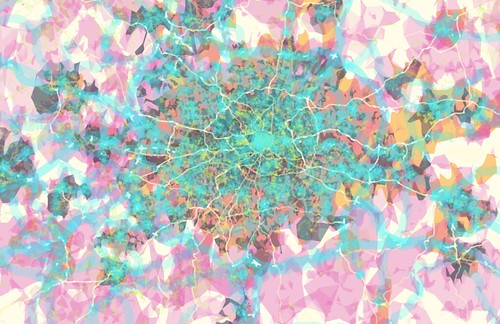
Nick introduced us to a couple of iPhone games which Timo immediately got addicted to.
A gallery of spacesuit-helmet reflections
Nick sent the studio this link to the plans that Audi have to turn their cars into mobile wifi hotspots. Maybe he’s dropping hints for a corporate car. Conversely, we’re wondering if we can do anything in the parking spots outside the studio for Park(ing) Day which is just 6 weeks away.
Here’s Dan Hill writing about what Arup Australia did for Park(ing) Day back in 2008.
Not sure we’ll be able to get a chicken in ours.
Talking of cities – I’ve been loving Tim Carmody of BERG-favourites Snarkmarket standing in for Jason at Kottke.org. His post on “Cities as Hypertext” is worth a read.
“whenever I read anything about the web rewiring our brains, foretelling immanent disaster, I’ve always thought, geez, people — we live in cities! Our species has evolved to survive in every climate and environment on dry land. Our brains can handle it!
Yep.
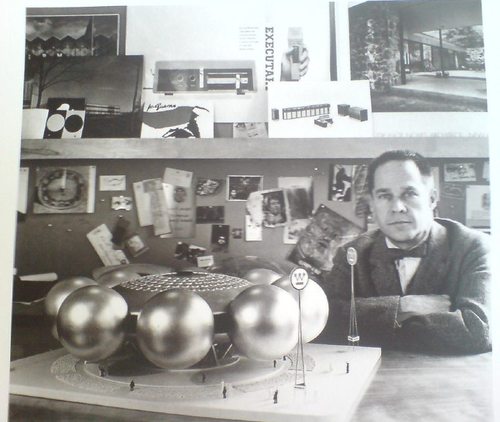
Greg Allen on the design of the proposed 1964 Westinghouse World’s Fair Pavilion, the comedy-subtitling of which I have been forbidden from using on this blog by my more mature colleagues.
Scott Berkun’s lessons from Wave and Kin include these words to live by:
Google Wave was weird, but cheap. Compared to Kin, which likely involved dozens of people and man-months, Wave was likely done by a small team of people. That was their biggest cost! If you’re going to have failures, even visible ones, better cheap and small, that expensive and large.
And finally…
Robotwatch! Cam pointed us to the robot that is going to explore the interior of the Pyramids, however exploration is nowhere to be found on the robot version of Maslow’s hierarchy of needs…
Have a lovely weekend, and be nice to robots when you meet them.
AT-AT day afternoon from Patrick Boivin on Vimeo.
BERG in Icon September issue

Outgoing editor Justin McGuirk asked me to write a little about the near-future of digital magazines for Icon #87, in which I talk a bit about challenges of the context they now find themselves in as a media form, as well as things we think we learned during the Mag+ project.
In other prognostication news, both Tom and myself have written “five things we are thinking about”, and friend-of-BERG Dan Hon is collecting a lot more of them here.
Recent Posts
-
We’re moving!
October 28, 2013
-
SVK shutting up shop sale!
October 14, 2013
-
Week 432
September 24, 2013
-
Week 431
September 17, 2013
-
week 430
September 10, 2013
Archive
Popular Tags
- 3c
- acts
- advertising
- alumni
- animation
- announcement
- apps
- ar
- art
- ashdown
- augmented reality
- augmentedreality
- availabot
- basaap
- bbc
- berg
- books
- bots
- celebrating-function
- cities
- citytracking
- comics
- communication
- communications
- companionspecies
- computer vision
- computervision
- concept
- conferences
- conversationalui
- cybernetics
- data
- dentsu london
- design
- dimensions
- drawing
- drivetime
- electronics
- elements
- eversion
- film
- friday
- friday links
- friends
- future
- futures
- games
- goldsmiths
- graphicdesign
- graphics
- hardware
- hat
- havasu
- hiring
- history
- hopeful monsters
- howbigreally
- howwework
- illustration
- india
- infovis
- interaction
- interactions
- interface
- ipad
- iphone
- journalism
- kendrick
- kinect
- knitting
- language
- lego
- light
- lightpainting
- links
- little printer
- looking
- machinelearning
- machines
- macroscopes
- magazine
- magplus
- making future magic
- makingfuturemagic
- manufacture
- manufacturing
- map
- maps
- materialexploration
- materials
- matt webb
- mechanical
- media
- mediasurfaces
- metaphors
- mobile
- mobile-phone
- mobilephones
- models
- moma
- mujicomp
- music
- near future
- night
- nokia
- nokiapersonalisation
- olinda
- optical
- packaging
- papernet
- participation
- patina
- people
- peripherals
- photographs
- photography
- play
- politeness
- posters
- press
- print on demand
- printing
- process
- product
- products
- projection
- prototyping
- radio
- rca
- research
- rfid
- robot readable world
- robot-arms
- robots
- schooloscope
- sci-fi
- scifi
- screens
- senses
- sensor-vernacular
- sensors
- sketching
- social
- space
- stories
- studio
- surface
- suwappu
- SVK
- synecdoche
- talk
- talks
- teaching
- team
- technology
- timelapse
- timo arnall
- touch
- toys
- trains
- travel
- TV
- typography
- ubicomp
- upcoming
- update
- vending
- video
- videophones
- visualisation
- web
- webapps
- week notes
- weeknotes
- work
- work-talks
- workshops
- writing

